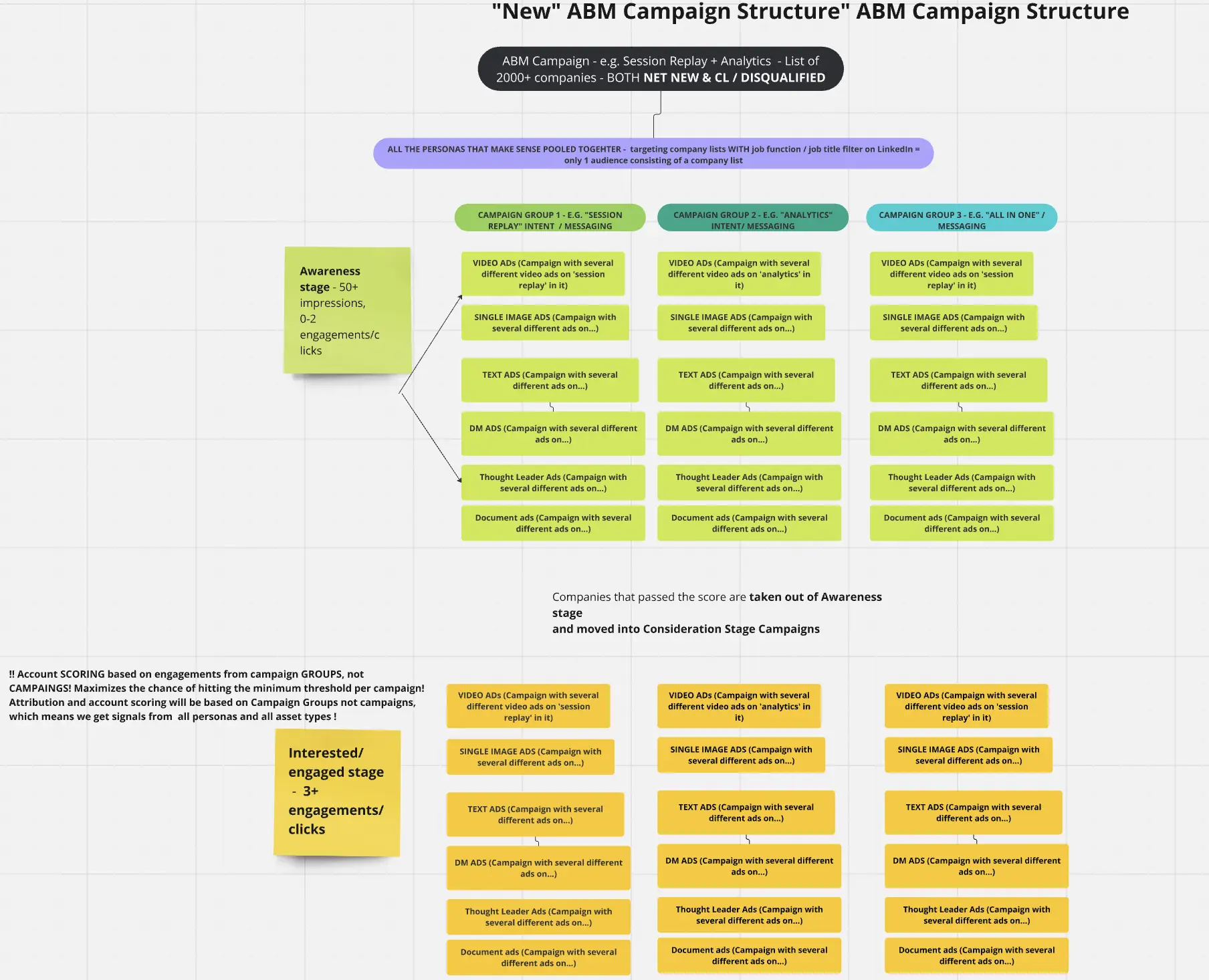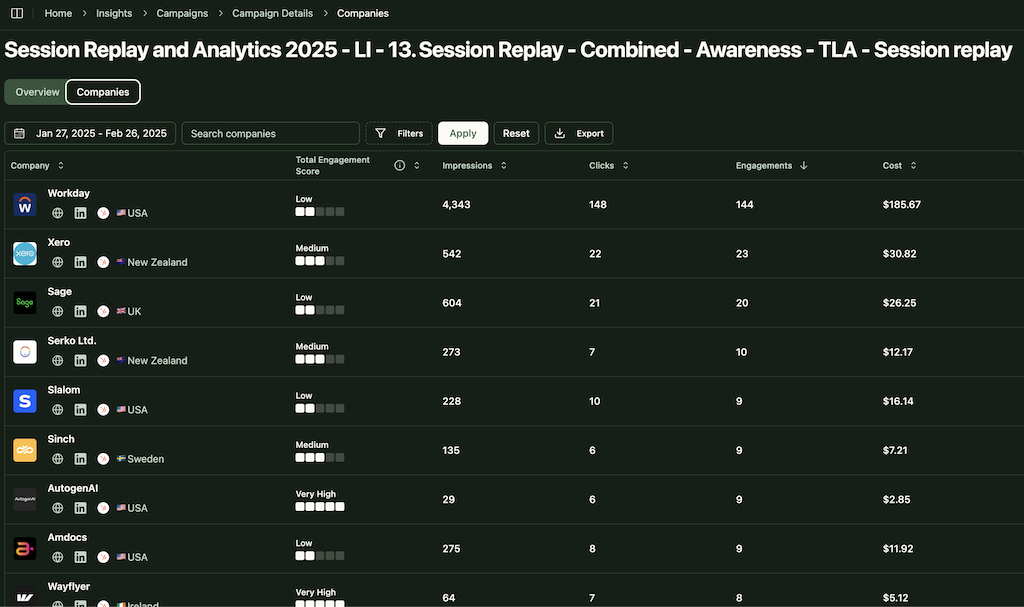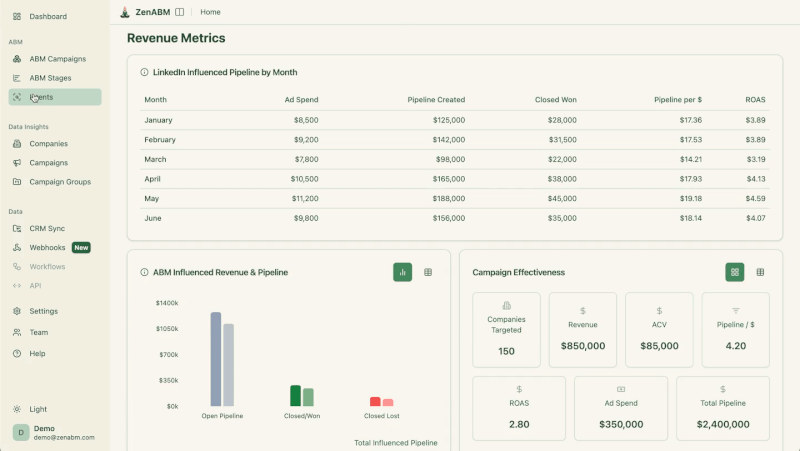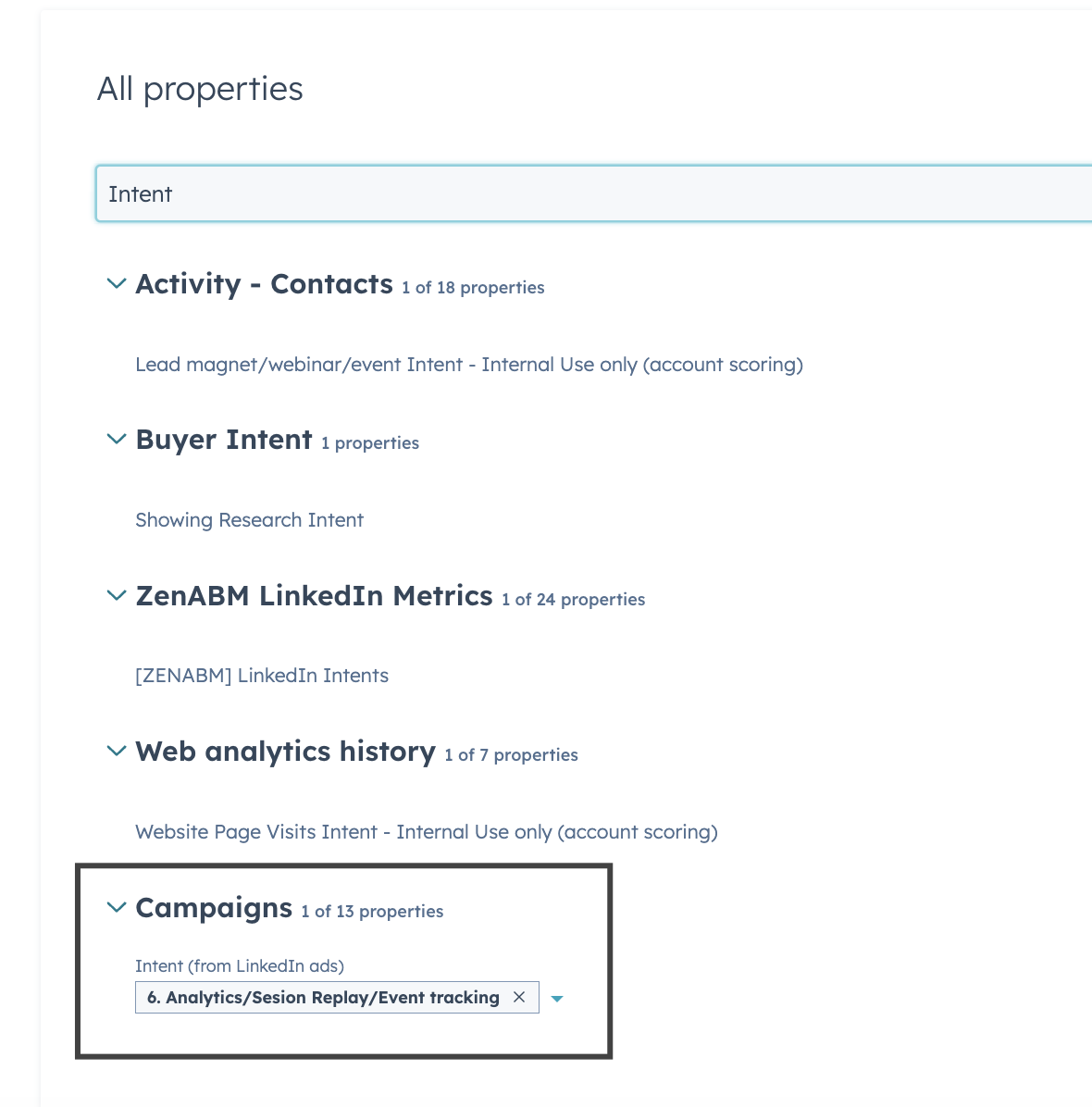
Account-based marketing has moved beyond the tired one-to-one, one-to-few, one-to-many chat.
The real action is in modern ABM approaches that top B2B teams are actually using.
I have discussed those advanced approaches in the article, and also how ZenABM helps you execute them on LinkedIn
Let’s go!

This ABM approach relies on predictive signals and data science to focus effort where buying energy exists.
By mining behavior and firmographic context across web searches, content consumption, technographics, and engagement patterns, predictive models score accounts and elevate those most likely to buy.
The output guides your target account list, messaging themes, and timing. Your TAL becomes dynamic as intent changes.
If Company XYZ spikes on “cloud security,” your ABM platform flags it and moves XYZ into an active sequence with cloud-security specific creative.
Use vendors like 6sense, Demandbase, and ZoomInfo for AI-driven account selection and monitoring.
Run always on listening for your ICP and trigger micro programs when intent jumps. Keep ads and emails ready for your top intent themes. Use automation to shift accounts between one-to-many and one-to-few based on behavior. Alert sales when an account crosses a heat threshold.
Best for scale. If you have more target accounts than your team can pursue, this narrows focus to those most likely to engage. It shines in crowded markets where timing decides the winner. Mid-market and enterprise teams with an ABM budget see major efficiency gains.
Okta boosted performance by injecting intent into account selection. A switch to intent-first targeting delivered a 24× lift in opportunity conversion and a 2.7× drop in cost per opportunity. Adoption of predictive analytics is now widespread.
Third-party intent can be vague or late. ZenABM connects to LinkedIn’s Ads API to capture first-party company-level engagement per campaign. 
You see exactly which creative an account engaged with and how often. Tag each campaign with an intent label and ZenABM rolls up buyers’ intent by company.


It also pushes account intent into your CRM as a company property.

Here is what this unlocks:
In short: ZenABM turns campaigns into an intent engine with real-time, account-specific signals. That beats proxy intent.
This ABM approach is a rapid response play. When a high-potential account appears or a market event opens a door, you mobilize a mini program immediately.
The moment a promising account surfaces, marketing and sales build a bespoke push. Research the account, assemble a tailored deck, craft custom content, and coordinate outreach within days. Treat it like a Tier 1 account overnight.
Great for fast-moving markets and early-stage teams. Use it when a marquee logo inbounds, when a non ICP account shows strong intent, or when a competitor stumbles. It supplements planned ABM. Too much reactive work creates burnout.
Adopt a SWOT style.
Define SLAs for quick assets, reuse templates, and keep an “opportunity playbook” with ready moves like short LinkedIn campaigns and rapid email cadences.
Set limits on last-minute jobs and communicate trade-offs. Maintain a small opportunistic budget and content stash so you can pounce without derailing core programs.
Lifecycle ABM applies account focus across the entire customer journey rather than only new logo acquisition.
Treat customers with the same ABM precision as prospects. Marketing, Sales, and CS align to drive adoption, value realization, upsell, cross sell, and renewal. Think targeted nurtures, executive value reviews, and expansion plays tied to usage data.
All the time, especially in recurring revenue models. It supports net dollar retention and turns customers into long-term advocates. It matters more when you have multiple modules or lines to expand into. Marketing can plug into account management motions at scale.
Map tactics to each stage:
SAP embedded ABM into adoption and advocacy programs under a global framework built by Marcelo Fernandes. The result was stronger ties and more expansion revenue.
This ABM approach emphasizes gratitude and partnership to deepen retention and advocacy.
Sales and marketing deliver personal gestures at key moments: executive notes, VIP invites, co-created stories, and public recognition.
Ideal for post-purchase moments, renewals, and long-term customers. It is also powerful right after a big win.
Plays include:
Upsell and cross-selling to existing customers can be up to 14X easier than new acquisition. Appreciation protects retention and opens doors to growth.
In this ABM approach, you build a one-account plan to win a specific high-stakes opportunity.
Identify must-win deals and run a parallel marketing program with sales:
The campaign runs alongside the sales cycle.
Use for marquee logos, very large ARR, or competitive bake-offs where a small win rate boost is worth serious investment. It also helps with at-risk key accounts that can be saved or expanded with a focused push.
Treat the opportunity as a market of one:
Quick fact: Deal-based or Pursuit ABM is popularized by Bev Burgess in Account Based Marketing: The Definitive Handbook for B2B Marketers.
Customer expansion is an ABM approach focused on growth inside existing logos.
Segment customers for expansion potential, then build targeted programs that highlight realized ROI and new value. Coordinate account reviews, training, and content that introduces relevant modules.
Use from day one in land and expand models. It is core for SaaS and enterprise tech where net revenue retention is the star metric. It also helps when churn prevention depends on showcasing new value.
Plays include:
Digital ABM tactics still apply, with value expansion as the theme.
Expansion can lift revenue by up to 43%. HubSpot’s multi-hub growth is a well-known example powered by targeted education and expansion marketing.
Vertical ABM clusters accounts by industry and delivers relevant content at scale.
Group accounts by sector and run campaigns with industry-specific ads, emails, pages, and events. A manufacturing push might center on downtime reduction with factory proof. Dedicated industry pods are common, which lets you reuse assets while keeping relevance high.
Use this ABM approach when value props change by industry or sales is organized by sector. Growth stage companies often follow a bowling pin sequence, winning one vertical then the next. It is also strong in compliance heavy markets where generic claims fail. Marketing should mirror sales here.
Build industry landing pages with matching proof, target industry roles on LinkedIn, publish sector reports, and run user groups by vertical. For instance, Adobe might separate nurtures for retail and government with different case studies.
A global comms provider used AI to personalize by industry and saw a 60%+ engagement lift. Quantexa has shared how industry-specific research accelerated their ABM in banking vs the public sector.
Scenario ABM is a time-bound approach where you deploy a prebuilt playbook for a defined use case.
Pick a scenario that ABM can move, then run a proven sequence for a set period. Examples include a new module for top accounts, a regional push, or a reaction to new regulations. Think “Q4 Pipeline Boost” with a 3-month sprint across ads, emails, and BDR touches.
Use whenever a repeatable initiative appears:
Document the play once, then reuse. A churn win-back sequence might run for six weeks with personalized offers and exec calls. Assemble a tiger team, run fast, measure, then disband.
Launch “Product X” for healthcare with a 3-month ABM sprint on 20 accounts: product team emails, compliance-themed ads, private webinars, and a mailed industry report. The goal is five pilots by quarter’s end. Retool and reuse next time.
ABM has outgrown the simple tiers. The leaders stack ABM approaches like intent, lifecycle, vertical, scenario, and partner plays to gain precision and scale.
The unifier is signal-driven personalization.
Platforms like ZenABM strengthen these approaches by turning every LinkedIn campaign into a live intent engine, so you see who is engaging and what is resonating.